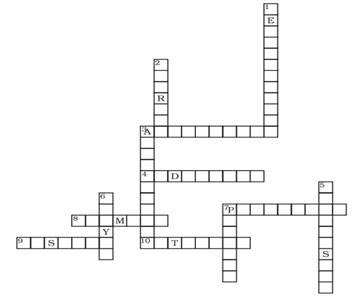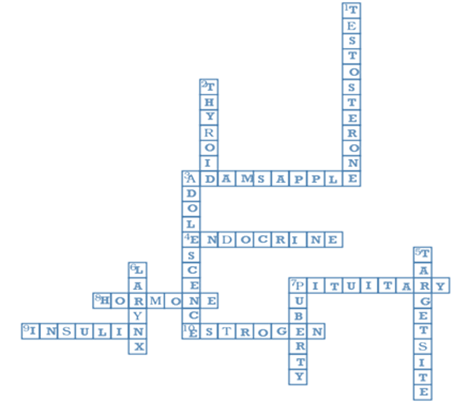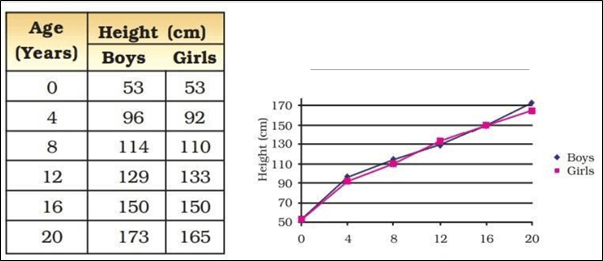NCERT Solutions for Class 8 Science Chapter 10 Reaching the Age of Adolescence
NCERT Solutions for Class 8 Science Chapter 10 Reaching the Age of Adolescence are given below. Here we have provided the best and error-free answers to all the exercise questions that will strengthen your foundation in science. Solving NCERT questions will assist you in grasping the content in the Crop Production and Management chapter in a better way.
In these solutions, we have answered all the intext and exercise questions provided in NCERT class 8 science textbook. NCERT Solutions for Class 8 Science Chapter 10 Reaching the Age of Adolescence provided in this article are strictly based on the CBSE syllabus and curriculum. Students can easily download these solutions in PDF format for free or can read them online.
Reaching the Age of Adolescence Class 8 Science NCERT Solutions
Exercise Questions
Question 1: What is the term used for secretions of endocrine glands responsible for changes taking place in the body?
Answer: Hormones are chemical messengers that transport signal from one cell (or gland) to another cell (or gland).
Question 2: Define adolescence.
Answer: Adolescence is the time period between the beginning of puberty and adulthood. During this period, the body undergoes several changes alongside reproductive maturity. It begins around the age of 11 and lasts till 18 or 19 years of age. The period of adolescence may vary from person to person.
Question 3: What is menstruation? Explain.
Answer: The process of shedding of the uterine lining on a regular monthly basis is called menstruation. It starts at puberty and in the reproductive cycle of the female body. The uterus prepares itself to receive a fertilized egg on every month. Due to this the inner lining of the uterus become thick and is supplied with blood to nourish the embryo. If the egg is not fertilized, then the lining of the uterus breaks down and get released in the form of blood through the vagina. The time period for this is about 2 to 8 days every month. This monthly cycle is known as the menstrual cycle.
Question 4: List changes in the body that take place at puberty.
Answer: Common changes occur among boys and girls during puberty:
- Sudden increase in height.
- Change in body shape.
- Change in voice. In boys voice becomes deep and harsh, in girls it is high pitched voice.
- Increased activity of sweat and sebaceous glands.
- Reproductive organs begin to mature.
- Appearance of secondary sexual characteristics.
Changes in Boys during puberty:
- Facial hairs such as beard and moustaches develop.
- Hair develops under the armpit, under chest and in the pubic regions.
- Voice becomes deeper.
- Muscles develop, and shoulder becomes broad.
- Increase in weight.
Changes in Girls during puberty:
- Development and enlargement of breasts.
- Hair develops under the armpit and in the pubic regions.
- Hips broaden and pelvic region widens.
- Initiation of menstrual cycle.
- Deposition of fat around hips.
Question 5: Prepare a Table having two columns depicting names of endocrine glands and hormones secreted by them.
Answer:
| Endocrine Glands | Hormones |
| Testis | Testosterones |
| Ovary | Oestrogen |
| Pituitary | Growth hormone |
| Adrenal | Adrenalin |
| Thyroid | Thyroxin |
| Pancreas | Insulin |
Question 6: What are sex hormones? Why are they named so? State their function.
Answer: Sex hormones are chemical substances produced by sex organs. For example, testosterone is the male sex hormone produced by the testis, and oestrogen is the female sex hormone produced by the ovary. These hormones affect the sexual features of an organism. Hence, they are known as sex hormones.
Functions of sex hormones:
Testosterone: This hormone brings about secondary sex characters in boys such as the growth of a beard, the voice becoming hoarse, development of reproductive organs, etc.
Oestrogen: This hormone is responsible for the development of secondary sexual characters in females such as the enlargement of breasts, development of female reproductive organs, etc.
Question 7: Choose the correct option.
(a) Adolescents should be careful about what they eat, because
(i) proper diet develops their brains.
(ii) proper diet is needed for the rapid growth taking place in their body.
(iii) adolescents feel hungry all the time.
(iv) taste buds are well developed in teenagers.
Answer: (ii) proper diet is needed for the rapid growth taking place in their body.
(b) Reproductive age in women starts when their
(i) menstruation starts.
(ii) breasts start developing.
(iii) body weight increases.
(iv) height increases.
Answer: (i) menstruation starts.
(c) The right meal for adolescents consists of
(i) chips, noodles, coke.
(ii) chapati, dal, vegetables.
(iii) rice, noodles and burger.
(iv) vegetable cutlets, chips and lemon drink.
Answer: (ii) chapati, dal, vegetables.
Question 8: Write notes on-
(a) Adam’s apple.
(b) Secondary sexual characters.
(c) Sex determination in the unborn baby
Answer 8:
(a) Adam’s apple: The protruding part of the throat is called Adam’s apple. It is the enlarged voice box or larynx which gets enlarged and visible from outside in boys at the onset of puberty. This makes the voice of boys hoarse.
(b) Secondary sexual characters: Secondary Sexual Characters are those characters which distinguish a male from female. Some of the characters are as follows:
Boys:
- Facial hairs such as beard and moustaches develop.
- Hair develops under the armpit, under chest and in the pubic regions.
- Voice becomes deeper.
- Muscles develop, and the shoulder becomes broad.
- Increase in weight.
Girls:
- Development and enlargement of breasts.
- Hair develops under the armpit and in the pubic regions.
- Hips broaden and pelvic region widens.
- Initiation of menstrual cycle.
- Deposition of fat around hips.
(c) Sex determination in the unborn baby: All human beings have 23 pairs of chromosomes in the nuclei of their cells. Out of these two chromosomes are the sex chromosomes, named X and Y. A female has two X chromosomes, while a male has one X and one Y chromosome. The gametes (egg and sperm) have only one set of chromosomes. The unfertilised egg always has one X chromosome but sperms may have X or Y. When a sperm containing X chromosome fertilises the egg, the zygote would have two X chromosomes and develop into a female child. If the sperm contributes a Y chromosome to the egg (ovum) at fertilisation, the zygote would develop into a male child. This concludes that the sex chromosomes of the father determine the sex of an unborn baby.
Question 9: Word game: Use the clues to work out the words.
Across
3. Protruding voice box in boys
4. Glands without ducts
7. Endocrine gland attached to brain
8. Secretion of endocrine glands
9. Pancreatic hormone
10. Female hormone
Down
1. Male hormone
2. Secretes thyroxine
3. Another term for teenage
5. Hormone reaches here through blood stream
6. Voice box
7. Term for changes at adolescence

Answer:

Question 10: The table below shows the data on likely heights of boys and girls as they grow in age. Draw graphs showing height and age for both boys and girls on the same graph paper. What conclusions can be drawn from these graphs?

Answer:
Conclusion:
- Girls are taller than boys till they reach the age of 12 years.
- Till the age of 16 years, the height of both boys and girls remain the same.
- After 16, both boys and girls gain increase in height. In general, boys are taller than girls.
NCERT Solutions for Class 8 Science Chapter 10 – A Brief Discussion
CBSE Class 8 Science NCERT Solutions Chapter 10 helps students to clear their doubts and to score good marks in the board exam. All the questions are solved by experts with a detailed explanation that will help students complete their assignments & homework. Having a good grasp over CBSE NCERT Solutions for Class 8 Science will further help the students in their preparation for board exams and other competitive exams such as NTSE, Olympiad, etc.